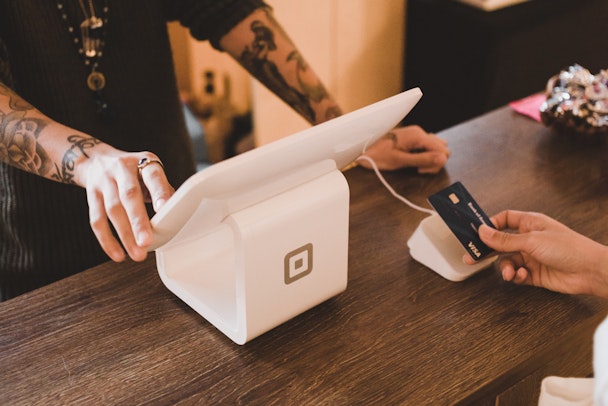Seven reasons your smart shopping campaigns aren’t performing
Smart Shopping is Google’s automated campaign system for promoting products in search listings. It uses machine learning to show ads across Search, Display and remarketing campaigns to maximize conversion value and optimize performance on your behalf.

Vertical Leap provides seven takeaways for using Google’s Smart Shopping automated campaign system to maximize conversion
In principle this sounds great, but there are plenty of problems you might experience with Smart Shopping campaigns. In this article, we address seven of the most common issues advertisers run into.
1) You’re not getting enough impressions
Low impressions are a common performance issue with Smart Shopping campaigns and there are several reasons your ads may not show as often as they could. The first thing you should do is make sure your product feed is complete, up-to-date and optimized to maximize visibility.
If your product feed is in order but you’re still not getting the impressions you expect from your Smart Shopping campaigns (especially if regular campaigns are fine), check whether you’ve set a target ROAS (tROAS) on your Smart Shopping campaigns.
If you’ve set a tROAS, remove it for a couple of weeks and see if this improves performance.
The issue with tROAS is that, if you set it too high, you can prevent Google from spending your budget as often as it could (in instances where it can’t achieve your tROAS) and this can prevent your ads from showing.
If you’re confident your tROAS settings are fine, check that 100% of your budget is being used. If it isn’t, raise your budget for a few weeks to give Google more room to work with and see how this impacts performance.
2) Inconsistent traffic from Smart Shopping campaigns
Inconsistent traffic is a common complaint with Smart Shopping campaigns, but it’s not necessarily a bad thing. Google tries to maximize conversion value by showing your ads at the most profitable times and not showing them when the potential conversion value or tROAS is calculated to be too low.
So, in a sense, inconsistent traffic means Smart Shopping campaigns are doing their job. You have to decide whether the inconsistency is benefiting or harming performance, and it’s always worth comparing against similar standard Shopping campaigns where you apply bid adjustments and ad scheduling to show your ads at the most effective times.
3) Poor-performing products
Some products simply perform better than others, and you can use regular Shopping campaigns to compare results v Smart Shopping campaigns to look for poor performers.
Google suggests adding every relevant product to Smart Shopping campaigns and, generally speaking, this is a good idea – until relevant but poor-performing products drag down results.
Look at regular Shopping campaign performance and identify the following:
-
Products with ROAS lower than your breakeven ROAS
-
Products with more than ten clicks in the past seven days but no conversions
-
Products with 15+ conversions but ROAS lower than your target ROAS
-
Products with no impressions in the past 14 days
Exclude these from your Smart Shopping campaigns until they demonstrate improved performance in regular campaigns.
4) Lacking data for Smart Shopping campaigns
With no search terms report for Smart Shopping, you have to put more effort into feed product titles and feed optimization. In some cases, you may even have to create duplicate product listings using different keywords to target important queries. For example, you may create multiple ads for the same product with the keywords ‘sneakers,’ ‘trainers’ and ‘running shoes’ in the titles.
5) Seasonal products underperform at peak times
Another issue you’ll often experience with Smart Shopping is seasonal products underperforming at peak times. Once again, you have to give Google room to take advantage of increased demand during holidays and other seasonal events.
Google recommends the following four steps for seasonal periods:
-
Continue using Smart Shopping campaigns: their objective is to maximize revenue and this performs well, even during periods of higher volume. The bidding algorithm picks up on short-term changes in performance and is able to adjust quickly.
-
Adjust your budget as needed: during seasonal periods, there’s often increased activity. In order to capitalize on this activity, look at the most recent occurrence of the same or similar seasonal events and set budgets appropriately.
-
Adjust your tROAS as needed: during a seasonal period, competitors often bid more aggressively to capture more traffic. If your campaign is limited by your minimum tROAS, consider lowering it.
-
Create a seasonality adjustment: use the advanced seasonality adjustment tool to schedule conversion rate adjustments (increase or decrease) that account for estimated changes due to an upcoming event. Learn more about seasonality adjustments.
6) Low conversions from Smart Shopping remarketing
Smart Shopping relies heavily on remarketing lists and you don’t have the same control over these as you do with regular shopping campaigns. Help Google add new people to your remarketing lists by using customer parameters, which identify the products website visitors show an interest in after they click through from your Shopping ads.
Keep in mind that some conversions take longer than others, which can have an impact on historical conversion reports.
7) Smart Shopping campaigns perform worse than standard Shopping campaigns
Smart Shopping campaigns often perform worse than similar standard Shopping campaigns – and the opposite may be true as well. This is why it’s so important to run both campaign types and compare results.
Just remember that Smart Shopping campaigns include Display and remarketing campaigns, so you have to compare the aggregate performance of regular Shopping campaigns with any associated Display and remarketing ads.
Callum Coard, PPC specialist at Vertical Leap.
Content by The Drum Network member:

Vertical Leap
We are an evidence-led search marketing agency that helps brands get found online, drive qualified traffic to their websites and increase conversions/sales.
To...

